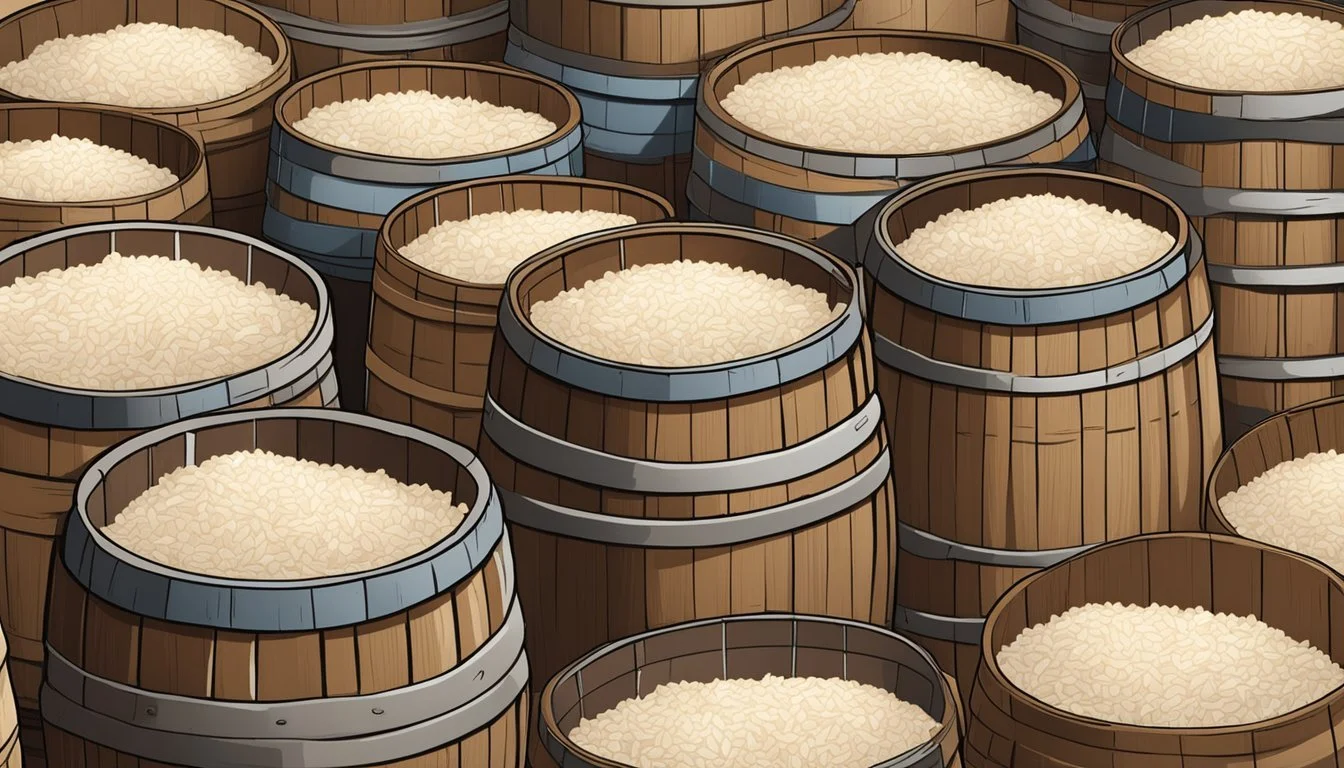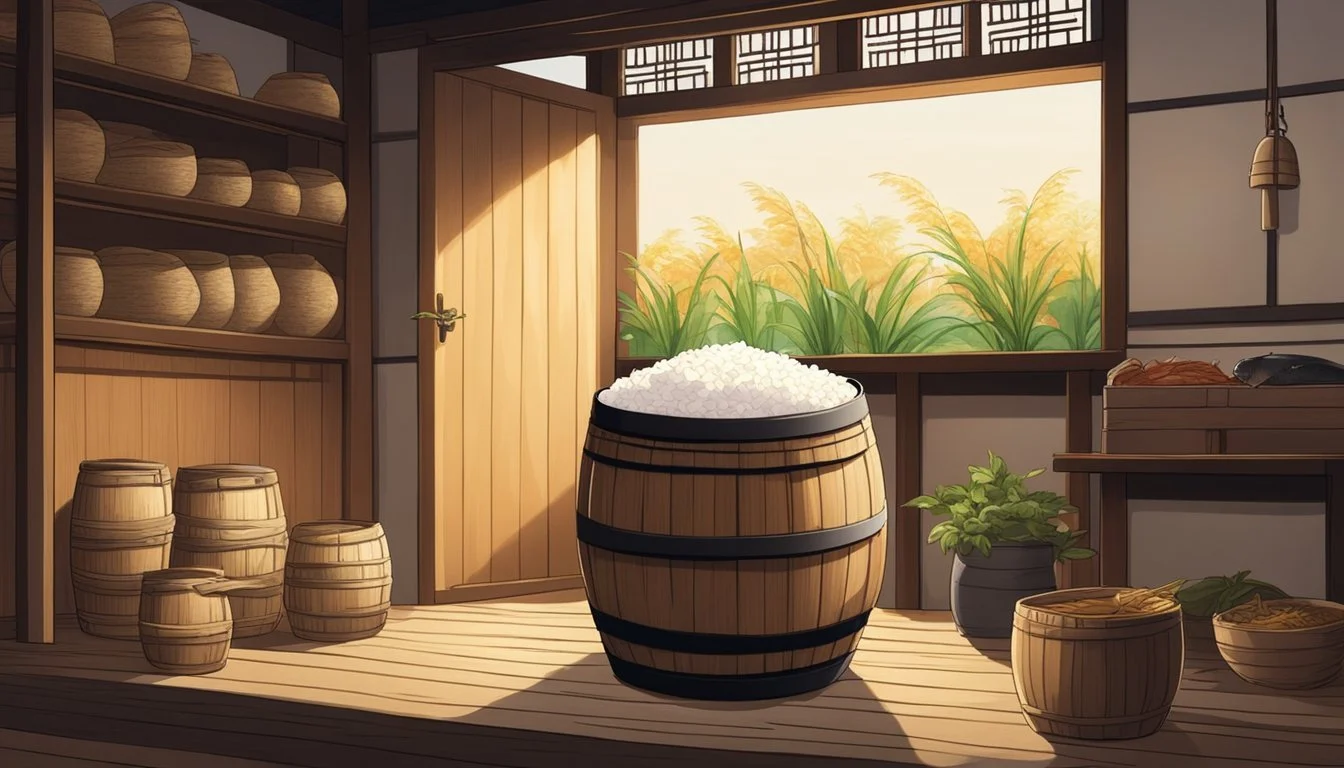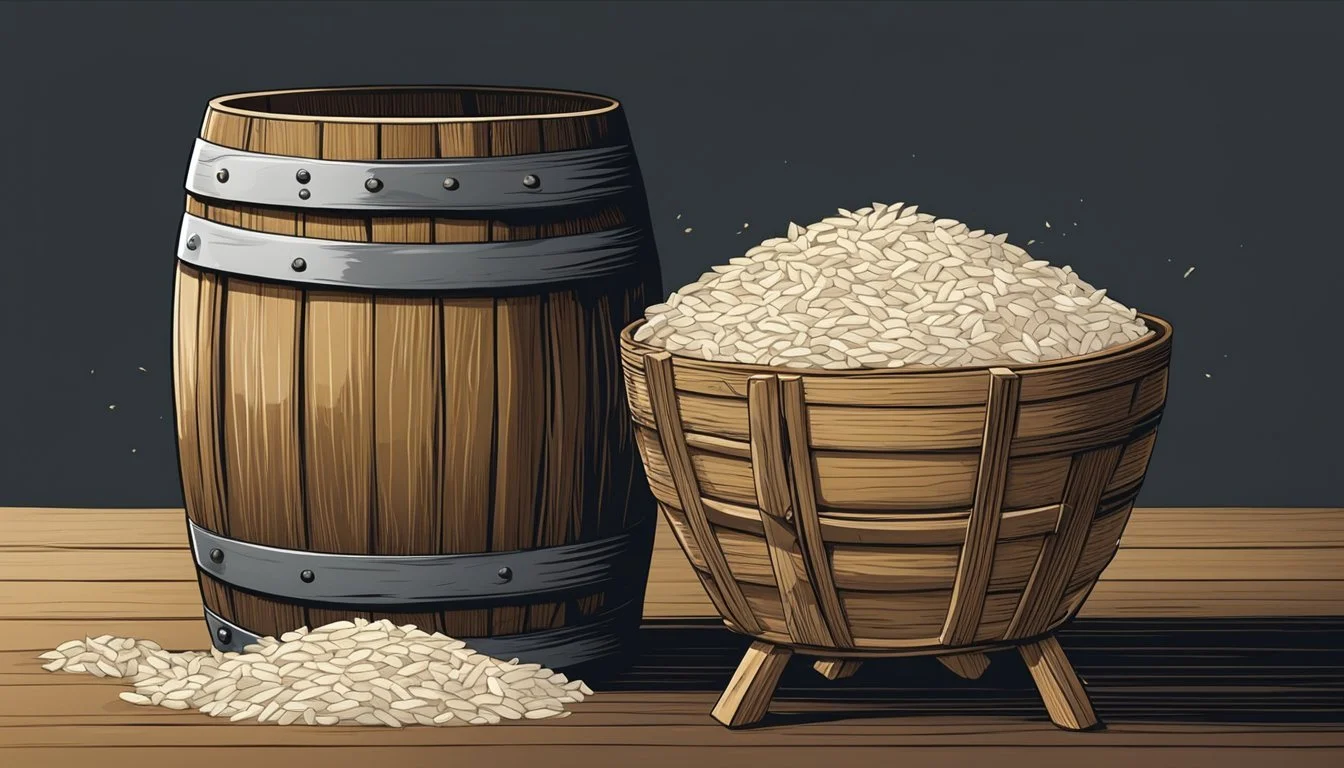How to Ferment Narezushi
Mastering Traditional Japanese Fermented Sushi
Narezushi, an ancient form of sushi, is a culinary art that captures the essence of traditional Japanese fermentation techniques. A testament to the culinary heritage of Japan, narezushi takes sushi back to its historical roots, far from the modern incarnations adorned with fresh fish (What wine goes well with fish?) and avocado. The practice of fermenting sushi, which dates to as early as the 10th century, involves a process of preserving fish with salt and rice, resulting in a distinct sour flavor and strong aroma. This method not only provided a means to store food for longer periods but also contributed to the rich array of Japanese gastronomy.
Creating narezushi requires patience and attention to detail. Fish such as carp, dace, and sweetfish are typical choices used in the process, selected for their ability to complement the unique flavors that arise from fermentation. The preparation begins with the thorough salting of the fish, then packing it with cooked rice, allowing it to undergo lacto-fermentation over several months. This transformative period allows the development of its characteristic taste and pungent smell.
Although less common in contemporary Japanese cuisine, narezushi still holds its place in regions like Shiga Prefecture, where a variant known as funazushi is cherished. The dish reflects an acquired taste, showcasing the harmonious blend of simplicity and complexity that marks Japan's culinary identity. Despite its prominence in the past, narezushi today remains a vibrant relic of the lengthy history of sushi.
Historical Significance of Narezushi
Narezushi, regarded as the progenitor of modern sushi, holds a revered place in Japanese culinary history. It originated in Southeast Asia, making its way to Japan by the 8th century. This early form of sushi began as a necessity—a method to preserve fish.
In ancient Japan, Narezushi evolved into more than a preservation technique; it became a gastronomic tradition. The fish, cured with salt and fermented with rice, would undergo a months-long fermentation process. This method showcased Japan's innovative approach to extending the shelf life of protein-rich food sources.
During the Edo period, a distinctive version of Narezushi called Funazushi, made from crucian carp, became prevalent, especially in Shiga Prefecture. It is believed to be one of the closest existing versions of the early Narezushi.
The practice of Narezushi is deeply intertwined with local traditions and festivities across Japan. It epitomizes the deep appreciation of seasonal and regional specialties. This culinary art offers a profound link to the past, enabling people to experience a taste that has survived the passage of centuries.
The historical significance of Narezushi is not just limited to food preservation; it represents Japan's ingenuity in gastronomy and respect for traditions, which has been instrumental in shaping Japan's food culture. It's a testament to how traditions can stand the test of time while giving rise to new culinary practices, such as the more familiar Edo-style sushi. The endurance of Narezushi reinforces Japan's commitment to heritage, reminding modern society of the rich history that flavors Japan's culinary identity.
Understanding Narezushi
Narezushi is the ancestor to contemporary sushi varieties, distinguished by its ancient preparation method involving fermentation. This traditional delicacy is more than just a meal; it's a cultural heritage preserved in specific regions of Japan.
Defining Narezushi
Narezushi refers to a type of traditional Japanese fermented sushi. It is made by salting fish and then fermenting it with cooked rice for months, or even years. The rice acts as a fermenting agent, producing lactic acid bacteria that pickle the fish, thus preserving it and adding a unique flavor profile.
Narezushi vs. Modern Sushi
Unlike modern sushi, with its fresh fish and vinegared rice, narezushi is characterized by its pungent smell and strong taste due to the fermentation process. Modern sushi, such as nigiri and maki, is a dish in which the rice is seasoned and the fish served fresh, a stark contrast to the preserved nature of narezushi.
Regions Famous for Narezushi
Several regions in Japan are renowned for their narezushi:
Kyoto, known for a refined style of narezushi with elegant presentation.
Shiga Prefecture, particularly the area around Lake Biwa, where a unique type of narezushi called funazushi is a local specialty, made using the endemic fish of the lake.
Ingredients and Preparations
Creating Narezushi involves careful ingredient selection and a precise preparation process. The following steps break down the crucial components and stages, ensuring clarity and confidence in fermenting traditional Japanese sushi.
Selecting the Fish
For traditional Narezushi, one typically chooses freshwater fish, such as nigorobuna for Funazushi, or ocean fish like salmon or mackerel. The fish must be very fresh and, ideally, in season to provide the best flavor. It is vital to clean the fish thoroughly and gut it while keeping the fish intact before the preservation process begins.
Salting and Preservation
Once the fish is selected and prepared, it is salted heavily. This salting process can last from a few weeks up to a few months depending on the size and type of fish being used. The salt not only flavors the fish but also acts to dehydrate it and prevent spoilage as the fermentation begins.
Salting timeline:
Small fish (e.g., mackerel): 2-3 weeks
Larger fish (e.g., nigorobuna, salmon): 1-3 months
After salting, the fish is rinsed and sometimes soaked in sake or vinegar to remove excess salt and improve the final taste.
Rice and Fermentation Process
The core of the fermenting agent is rice inoculated with koji, a beneficial mold that aids in fermentation. The gutted and salted fish is packed with this prepared rice, which has started the fermentation process due to the action of koji.
Rice preparation:
Cook the rice until it's slightly firmer than regular sushi rice.
Cool the rice to room temperature.
Mix the rice with koji to initiate fermentation.
In some methods, layers of rice bran are included in the packing to increase sourness and aid fermentation. The entire mixture is then sealed to prevent spoilage and left to ferment. Depending on ambient temperature and desired taste, the fermentation can last from a year to several years, resulting in a uniquely sour and pungent fermented fish product known as Narezushi.
The Fermentation Journey
The fermentation of Narezushi is a transformative process that extends over several months, or in some cases, years. This period is critical for developing the unique flavors and aromas characteristic of traditional Japanese fermented sushi.
Fermenting Stages
In the initial stages of fermentation, the fish destined for Narezushi undergoes a meticulous preparation. Scales are removed, and the fish are gutted and salted to prevent spoilage. The salted fish is then packed in cooked rice, which initiates the fermentation. Beneficial bacteria and yeasts naturally present in the environment start breaking down the proteins and fats within the fish, a process that can span from several months to years, depending on the desired outcome.
Key stages of fermentation:
Salting: The fish is liberally coated with salt.
Rice Packing: The salted fish is layered with cooked rice.
Sealing: The mixture is sealed, often in barrels, creating an anaerobic environment.
Aging Process
As the Narezushi ages, lactic acid bacteria take the lead in the fermentation process, further preserving the fish and enhancing its taste. The length of the aging phase can significantly alter the final product. Typically, Narezushi may age anywhere from six months to as long as three years. During this time, the rice breaks down, and the flavors from the fish and rice meld, creating a complex profile.
Short-term aging: Yields a milder Narezushi with subtler flavors.
Long-term aging: Results in a stronger taste and a more pronounced aroma.
Development of Flavors and Aromas
The fermentation and aging process of Narezushi brings about the development of rich, deep flavors and distinct aromas. The production of amino acids during fermentation contributes to the umami, the savory flavor associated with fermented foods. Additionally, the extended aging time allows for the flavors to mature, resulting in a characteristic strong smell that can be quite potent to the unaccustomed palate.
Flavor Notes:
Savory: Due to the presence of umami.
Complex: From the fermenting and aging fish and rice.
Aroma Profile:
Strong: A matured, pungent odor that is a signature of aged Narezushi.
Through the careful control of time and environmental conditions, the fermentation journey culminates in the creation of Narezushi, a preserved delicacy rich in history and flavor.
Culinary Techniques and Traditions
The meticulous process of fermenting Narezushi is steeped in tradition, requiring skill and patience. Every step is crucial in achieving the distinctive flavor profile that characterizes this ancient Japanese delicacy.
Preparing the Fish
The fish used in Narezushi must undergo a precise preparation method. Sushi chefs begin by selecting a high-quality protein, such as a carp or mackerel, known for their fatty content which enriches the fermentation process. The fish must then be cleaned thoroughly, with bones and innards carefully removed to avoid spoiling the batch. It is then salted and left to rest, which serves to draw out moisture and aid in preservation.
Layering Ingredients
The next step is to create the fermentation bed by layering ingredients traditionally. Cooked rice and the prepared fish are alternated in a stringent order to ensure uniform flavor development. The rice's role is twofold: it helps in the fermentation of the fish and imparts subtle acidity, which is a hallmark of Narezushi.
Rice Layer: A bed of cooled, cooked rice seasoned with salt.
Fish Layer: The prepared fish laid over the rice.
Repeat: Alternating layers until the vessel is nearly full.
Final Presentation
After fermenting, the dish is meticulously assembled for presentation. The layers are carefully separated, and the fish may be served with the fermented rice or just a hint of it. Presentation is key in Japanese cuisine, so the final dish is arranged beautifully, honoring both the visual appeal and the rich history behind this culinary tradition. Presentation not only reflects the skill of the chef but also pays homage to the lengthy process that makes Narezushi a revered Japanese delicacy.
Serving and Consumption
When serving narezushi, one should understand the importance of the accompanying sides and condiments, as well as the choices of drinks to enhance the experience of this traditional dish.
Sides and Condiments
Common sides served with narezushi include slices of cucumber and pickled vegetables, (What wine goes well with pickled vegetables?) such as daikon radish. These not only add a refreshing contrast but also help balance the strong flavors of the fermented fish. Soy sauce may be offered for dipping, but it is typically used sparingly to avoid overpowering the unique taste of the narezushi. The subtle flavors of these sides and condiments are integral in highlighting the rich, savory nuances of the fermented local fish.
Pairing with Drinks
Narezushi pairs well with traditional Japanese beverages. A classic choice is sake, a Japanese rice wine, whose clean and umami-forward profile complements the complex flavors of narezushi. To match the distinctiveness of narezushi, one might opt for a junmai-type sake, which tends to have a fuller flavor that stands up well to the fermented sushi. For those who prefer non-alcoholic options, green tea can be a pleasing companion, offering a palate-cleansing effect with its mild bitterness and aromatic qualities.
Cultural and Health Aspects
Narezushi, a fermented Japanese sushi, has been part of Japanese culture for centuries, offering unique nutritional benefits. It's crucial to consider cultural significance, health impact, and storage practices to appreciate this ancient delicacy fully.
Narezushi in Japanese Culture
Originating in Southeast Asia and making its way to Japan, Narezushi became a vital part of Japanese cuisine, particularly as a means of preserving fish before the advent of refrigeration. The process of fermentation is steeped in tradition and has been perfected over the centuries. It remains a celebrated dish in Japan, symbolizing a culinary connection to the past.
Historic Significance:
10th Century: Narezushi begins its evolution in Japan.
Kyoto: Known for its taste of the imperial past.
Hokkaido: Offers a unique island experience of Narezushi.
Nutritional Benefits
Narezushi is rich in nutrients, providing a host of health benefits. The fermentation process not only conserves the fish but also creates beneficial bacteria, contributing to gut health. Rich in proteins, Omega-3 fatty acids, and essential vitamins, Narezushi is a nutritious addition to any diet.
Key Nutrients:
Proteins: Essential for muscle repair and growth.
Omega-3 Fatty Acids: Crucial for heart and brain health.
Safety and Storage
Ensuring the safety of Narezushi is paramount. Proper fermentation and storage inhibit the growth of harmful bacteria. Traditionally, Narezushi requires a precise and time-honored fermentation process, often taking years. Modern refrigeration has aided in safer storage and handling, making Narezushi more accessible while still honoring its age-old traditions.
Storage Tips:
Temperature Control: Keep refrigerated to prevent spoilage.
Hygiene: Use sterilized utensils to avoid contamination.
Contemporary Narezushi Scene
While Narezushi has its origins in ancient culinary practices, it continues to find a place in modern dining establishments, often showcasing local preferences and innovations. This enduring dish balances tradition with modern tastes.
Narezushi in Modern Dining
Contemporary restaurants in Japan, especially within regions like Hokkaido, often include Narezushi on their menus as a nod to the country's gastronomic heritage. It's typically served to those with adventurous palates who appreciate the robust flavors and unique texture that set it apart from popular forms like maki rolls and nigiri. It isn't uncommon for aficionados to consider Narezushi a favorite due to its complex taste profile.
Innovations and Variations
Chefs are creating innovative takes on this traditional dish, introducing variations that experiment with different types of fish and fermentation periods. In some dining spots, Narezushi is paired with contemporary sides such as tempura or transformed into a delicacy akin to an ochazuke-rice porridge, providing a refreshing contrast to the potent fermented fish. This evolution ensures that Narezushi continues to be an integral and evolving part of the sushi experience.
Conclusion
Narezushi stands as a testament to the rich heritage of Japanese cuisine, an enduring delicacy from the Edo-era, continuing to challenge and delight the palates of those who seek out the roots of sushi. The process of fermenting Narezushi requires patience and precision, ensuring that the traditional flavors are preserved and the sushi is safe to consume. As one ventures on the path of creating Narezushi, it is essential to maintain the meticulously crafted balance of rice, fish, and koji mold.
The intricate method of preparing Narezushi underscores the culinary artistry that Japanese cuisine is renowned for, with its emphasis on natural flavors and fermentation techniques. While not as ubiquitously enjoyed as modern forms of sushi, Narezushi holds a special place in the spectrum of Japanese gastronomy.
It is, however, important to approach Narezushi with respect for its cultural background and culinary significance. Resources such as coverage by CNN highlight not just the food but its unique place in the world’s culinary scene. Those interested in the full experience of Narezushi can seek it in its native Japan, where it is more than just food; it is a cultural journey into the annals of Japanese gastronomy.
For enthusiasts and connoisseurs alike, Narezushi remains an homage to the enduring legacy of Japanese culinary traditions. It is not merely a dish but a historical narrative crafted by the hands of time and the dedication of those who continue to ferment it according to age-old practices.






